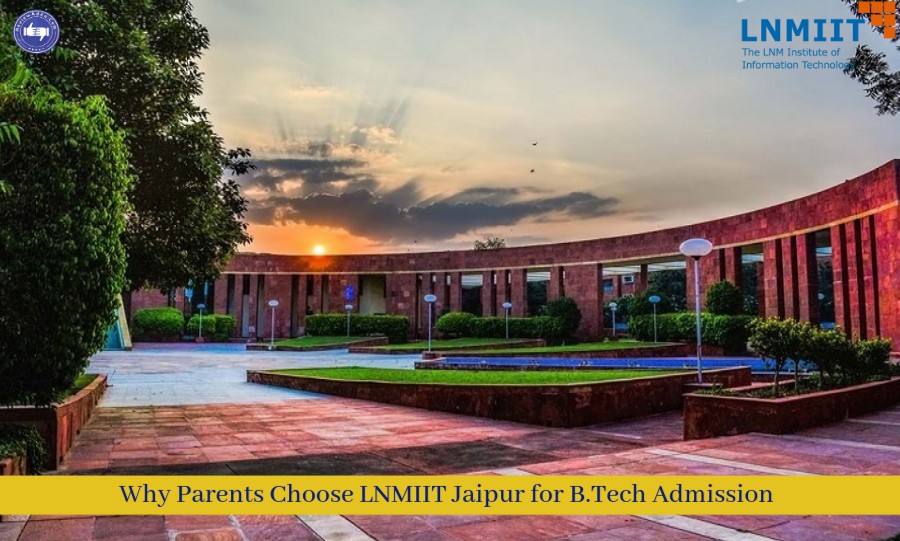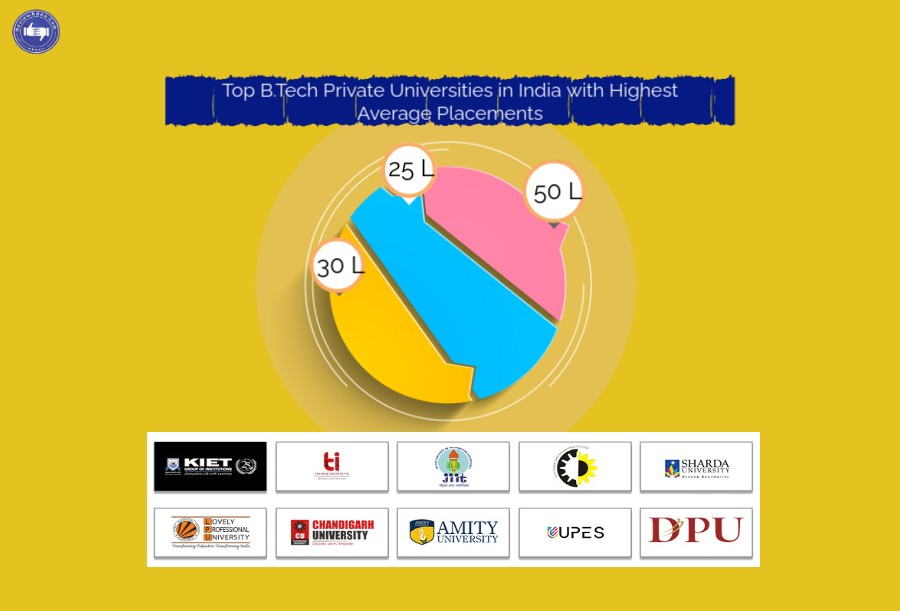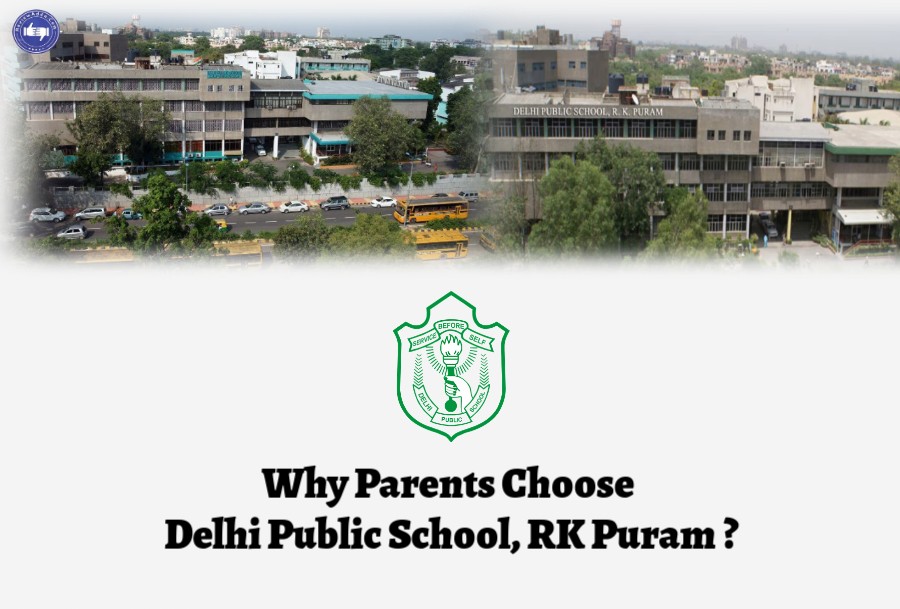An inquisitive question which makes baffled our mind is - which is better studying in Top university of India or join Top Universities of Abroad? Through this article, we are trying to clear your concepts about to study in India or abroad, in universities IIT vs MIT vs Stanford vs Harvard.

Indian Institute of Technology (IIT)
In a juxtaposition between IIT vs MIT vs Stanford vs Harvard, we initiate the depiction from IIT. Indian Institute of Technology is an eminent name in India or across the globe for its world-class excellence in technical education.
IIT is considered as one of the toughest Entrance Examinations in India due to various factors like difficulty level of exam, availability of less no. of seats, and qualifying rate. Currently, there are 23 IITs in various cities of India, Let’s have a look to the list of IITs, its ranking, availability of seats, and no. of programmes offered by them.
|
Name of IIT |
MHRD Ranking 2018 |
BTech Seats |
B.Tech Fees (in Rs/sem) |
BTech Programmes |
|
IIT Kharagpur (IITKGP), Est 1951 |
4 |
690 |
1,16,376 |
15 |
|
IIT Bombay (IITB), Est 1958 |
2 |
778 |
1,15,300 |
8 |
|
IIT Kanpur (IITK), Est 1959 |
5 |
713 |
1,12,700 |
8 |
|
IIT Madras (IITM), Est 1959 |
1 |
505 |
1,08,947 |
9 |
|
IIT Delhi (IITD), Est 1963 |
3 |
799 |
1,16,450 |
11 |
|
IIT Guwahati (IITG), Est 1994 |
7 |
702 |
1,14,150 |
10 |
|
IIT Roorkee (IITR), Est 2001 |
6 |
879 |
1,09,480 |
11 |
|
IIT (BHU) Varanasi, Est 2008 |
19 |
876 |
1,20,700 |
100 |
|
IIT Bhubaneswar (IITBBS), Est 2008 |
18 |
273 |
1,13,200 |
6 |
|
IIT Gandhinagar (IITGN), Est 2008 |
27 |
194 |
1,45,500 |
6 |
|
IIT Hyderabad (IITH), Est 2008 |
9 |
294 |
1,17,705 |
9 |
|
IIT Jodhpur (IITJ), Est 2008 |
54 |
247 |
1,52,100 |
4 |
|
IIT Patna (IITP), Est 2008 |
24 |
250 |
1,10,119 |
5 |
|
IIT Ropar (IITRPR), Est 2008 |
22 |
297 |
1,10,650 |
6 |
|
IIT Indore (IITI), Est 2009 |
14 |
275 |
1,28,650 |
5 |
|
IIT Mandi, Est 2009 |
26 A |
200 |
1,11,250 |
4 |
|
IIT Palakkad (IITPKD), Est 2015 |
Not ranked |
163 |
1,12,700 |
4 |
|
IIT Tirupati (IITTP), Est 2015 |
Not ranked |
180 |
1,14,750 |
5 |
|
IIT Dhanbad (IITDHN), Est 1926 |
13 |
919 |
1,22,450 |
13 |
|
IIT Bhilai (IIT C), Est 2016 |
Not ranked |
126 |
1,15,750 |
3 |
|
IIT Goa, Est 2016 |
Not ranked |
97 |
1,10,876 |
3 |
|
IIT Jammu, Est 2016 |
Not ranked |
154 |
1,16,450 |
5 |
|
IIT Dharwad, Est 2016 |
Not ranked |
126 |
1,16,376 |
3 |
Massachusetts Institute of Technology (MIT)
MIT is a Cambridge, Massachusetts based Private Research University which was established in 1861. MIT is distinguished for its scientific & technological research and training. The Radiation laboratory administered by MIT became the leading centre for radar research and development for the nation also has other military laboratories.
Out of IIT vs MIT vs Stanford vs Harvard, Massachusetts Institute of Technology offers both graduate and undergraduate programs. Perhaps, MIT is best known for its programs in engineering and the physical sciences but there are five academic schools which you know about— the School of Engineering, the School of Architecture and Planning, the MIT Sloan School of Management, the School of Humanities, Arts, and Social Science, and the School of Science—and the Whitaker College of Health Sciences and Technology. While other strong areas are—notably political science, economics, linguistics, urban studies, and philosophy. Total enrolment the institute has about 10,000.
Highlights
- According to QS world university rankings 2019, MIT is ranked no. 1 in the world.
- By U.S. News 2018, the University is ranked 3rd in the category of National Universities and 2nd in the category of Global Universities. It was also secured 1st position in the category of best engineering schools and 5th in the category of best Business schools.
- Student-faculty ratio: 3:1 (undergraduates only)
- 91% of undergraduate students receive some type of financial aid including scholarships, loans and jobs
- In 2017, 24% of bachelor’s degree graduates received full-time jobs offer through internships
- In the year 2017, 54% of MIT undergraduates took jobs after graduation and 37% opted to pursue higher studies at graduate school
- In 2017, 81% master’s students graduating from MIT entered the work sector and 11% opted for higher studies
- Some of the top employers are General Motors, Google, Accenture, Microsoft, Facebook, MIT, Amazon, Northrop Grumman, US Navy, Goldman Sachs, Apple, McKinsey, Bain & Company, Boeing, and Oracle
Fees
|
Courses |
Duration |
1st Year Tuition Fees |
|
MBA(2 Courses) |
20 - 24 Months |
INR 51.2L - 64.5L |
|
MS(12 Courses) |
9 - 30 Months |
INR 33.2L - 54L |
|
BE/B.Tech(8 Courses) |
4 Years |
INR 35.5L - 36.9L |
|
BBA(1 Course) |
4 Years |
INR 35.5L |
|
Other Courses(3 Courses) |
4 Years |
INR 35.5L - 36.9L |
Entry Criteria
|
Courses |
Exams |
|
MBA(2 Courses) |
GMAT: Accepted GRE: Accepted TOEFL: Accepted |
|
MS(12 Courses) |
GMAT: Accepted GRE: Accepted IELTS: 6.5-7.5 |
|
BE/B.Tech(8 Courses) |
SAT: Accepted TOEFL: 90 & Above |
|
BBA(1 Course) |
SAT: Accepted TOEFL: 90 & Above |
|
Other Courses(3 Courses) |
SAT: Accepted TOEFL: 90 & Above |
Stanford University
Stanford University officially called Leland Stanford Junior University a well-known name in the field of excellence in education. It was established in 1891 by Leland and Jane Stanford in the remembrance of their only child.
Among IIT vs MIT vs Stanford vs Harvard, Stanford University offer both undergraduate and graduate programs. According to Bloomberg 2019, Stanford University is ranked no. 1 for Bloomberg Global Best Business School and in the same year Financial Times gives it no. 1 position in FT Global MBA Ranking 2019.
Highlights
- Out of IIT vs MIT vs Stanford vs Harvard, Stanford University is ranked 2nd globally by QS World University Rankings 2019 and 3rd Worldwide by Times Higher Education World Rankings 2019
- In 2019, Stanford University is ranked seventh in U.S. News Rankings
- In comparison between IIT vs MIT vs Stanford vs Harvard, Stanford University has 5:1 student-faculty ratio.
- Approximately 70% of the students receive some form of aid to attend Stanford
- Last year 47% of undergraduate students received need-based aid from Stanford
- In 2015, 85% of students received some form of financial assistance and 78% of Stanford undergraduates graduated debt-free
Fees
|
Courses |
Duration |
1st Year Tuition Fees |
|
MBA(1 Course) |
24 Months |
INR 50.4L |
|
MS(10 Courses) |
1.4 - 24 Months |
INR 24.2L - 91.6L |
|
BE/B.Tech(7 Courses) |
4 Years |
INR 35L - 36.5L |
|
BBA(1 Course) |
4 Years |
INR 36.5L |
|
Other Courses(8 Courses) |
2 - 6 Years |
INR 30.5L - 36.5L |
Entry Criteria
|
Courses |
Exams |
|
MBA(1 Course) |
GMAT: Accepted GRE: Accepted IELTS: 7 & Above |
|
MS(10 Courses) |
GMAT: Accepted GRE: Accepted IELTS: 7 & Above |
|
BE/B.Tech(7 Courses) |
SAT: Accepted |
|
BBA(1 Course) |
SAT: Accepted |
|
Other Courses(8 Courses) |
SAT: Accepted TOEFL: 100 & Above |
Harvard University
Established in 1636, Harvard is the oldest and prestigious institution of higher education in the United States. In 2019, Financial Times gives 2nd rank in Global MBA Ranking to Harvard University.
Highlights
- Among IIT vs MIT vs Stanford vs Harvard, Harvard University is ranked 3rd globally by QS World University Rankings 2019 and 6th by Times Higher Education globally.
- Out of IIT vs MIT vs Stanford vs Harvard, Harvard University is ranked 2nd in the 2019 U.S. News Rankings
- Harvard Business School is ranked second in the Global MBA Ranking 2019 by Financial Times
- The student-faculty ratio is 7:1 for undergraduate programs
- In comparison between IIT vs MIT vs Stanford vs Harvard, Harvard University has students from diverse communities: hailing from all more than 80 countries who bring different backgrounds, life experiences and perspectives to campus
- Over 55% of Harvard College students receive scholarship aid, and the average grant this year is $50,000
- The total 2018-2019 cost of attending Harvard College without financial aid was $46,340 for tuition and $67,580 for tuition, room, board, and fees combined
- 2/3rd of students work during the academic year at Harvard college
Fees
|
Courses |
Duration |
1st Year Tuition Fees |
|
MBA(1 Course) |
24 Months |
INR 50.6L |
|
MS(6 Courses) |
12 - 48 Months |
INR 28.8L - 36.6L |
|
BE/B.Tech(5 Courses) |
4 Years |
INR 34.8L |
|
Other Courses(13 Courses) |
1 - 5 Years |
INR 13.4L - 37.4L |
Entry Criteria
|
Courses |
Exams |
|
MBA(1 Course) |
GMAT: Accepted GRE: Accepted IELTS: Accepted |
|
MS(6 Courses) |
GRE: Accepted TOEFL: 80-92 |
|
BE/B.Tech(5 Courses) |
SAT: Accepted TOEFL: Accepted |
|
Other Courses(13 Courses) |
SAT: Accepted GMAT: Accepted GRE: Accepted |
After go through the information regarding all the four renowned universities - IIT vs MIT vs Stanford vs Harvard, we are able to start the comparison between IIT vs MIT vs Stanford vs Harvard without any delay. So, let’s trigger it with IIT vs IMT out of IIT vs MIT vs Stanford vs Harvard.
IIT or MIT – this question is asked so frequently, given the craze for IITs and new opportunities to study abroad. To help you out among the two choices, we analyzed the experiences of several folks, who have been on both sides of the comparison of two, and here is what they have to share:
Securing admission
In comparison between IIT vs MIT vs Stanford vs Harvard, IIT or MIT says the passion for studying science, an aptitude for research and the ability to do team work, are the best qualities that foreign universities look for while recruiting students. Contrary to these, IITs solely focus on the ranking secured in the entrance tests by the students. Often, this objective type assessment is not an accurate measure of an individual’s capability and interest.
Creativity compromised
There is no doubt that the IITs have some of the best minds of the country, but the vital question is, do the students love what they study. Among IIT vs MIT vs Stanford vs Harvard, to start with IIT, the coaching institutes which primarily prepares applicants for the IIT entrance exam accentuate on strategic problem solving and time management. For example, it is advised to save the time first by solving easy problems rather than take up the challenge to solve difficult problems. Next concern thing about coaching centres is they often lay stress on ignoring school education and incline more towards IIT preparation due to which the necessity of proper education has been compromised. On the other hand, passion and interest for a particular subject are the qualities foreign universities swear by.
Flexible learning
Among IIT vs MIT vs Stanford vs Harvard, the field that you get to study completely depends on your IIT JEE rank. Thus a person who has no interest in mechanical engineering might be forced to study it because of his rank. There is no provision to change your subject in case you develop an inclination for some other branch. And even if you have the option to do so, the process is very tedious. Foreign education is pretty flexible they value an individual.
Infrastructure and faculty
In comparison between IIT vs MIT vs Stanford vs Harvard, education is definitely more expensive abroad than in India but one ought to pay for quality. Foreign universities boast of a robust infrastructure including, modern labs, modern teaching facilities, good quality hostels, food, etc., which their Indian counterparts generally lack. The faculty is inspired to shine and be role models. Unlike IITs faculty, foreign universities gave good pay and resources to provide quality teaching. The ratio between student and teacher is balanced in foreign institutes enabling teachers to give individual attention.
“There is a good reason why IIT is not MIT”, says Srivatsa Krisha (IIT Madras, Harvard Business School, IIM Bangalore), while comparing IIT and MIT:
- Among IIT vs MIT vs Stanford vs Harvard, a budget of Rs. 200 crores of IIT Madras hardly crrelates against millions of dollars of endowments of MIT, Caltech and Harvard. Despite this, world-class journals have published about professors of IIT Madras.
- Out of IIT vs MIT vs Stanford vs Harvard, In recent years, IIT Bombay hired over 26 new faculty members, predominantly from Wharton, INSEAD, MIT etc. Now, the question raised is “Why would young PhDs/ brilliant faculty from these well-known schools voluntarily relocate to IIMB unless they saw the possibility of doing world-class research and teaching there?
- Why do global companies, banks and consulting firms repeatedly hire from IITs/IIMs?
Life @ Institute
When we are talking about the difference between IIT vs MIT vs Stanford vs Harvard, Foreign institutes work on to make an individual “life ready” rather than “job ready”. They embolden interactions among participation in clubs peers, and extra co-curricular activities, travelling for internships and teamwork. Alumni meets are organized regularly which are mutually favourable for current and ex- students. They want to produce leaders for tomorrow and realize the equal importance of social skills. At the IITs, mundane competition is a priority. The flare is often adrift when students are busy balancing creativity and exam preparation.
What’s after graduation?
Among the four IIT vs MIT vs Stanford vs Harvard, there is a trend in IITs is to opt an MBA from a premier institute after completing an engineering degree. This not only is a waste of the engineering degree, but also a waste of time, money and effort of four years pursuing a course in which a student was never really interested in. On adverse, it is noticed that after a foreign degree, students often are keen on further specializing in their chosen fields and also get into academics.
We only urge you to consider all the choices available to you before you make one of the most important decisions in your life.
5 reasons why MIT is better than IIT
The Indian education system is far behind when compared to other countries. The top notch institutions such as IITs and IIMs lag behind institutes such as Harvard, MIT, Stanford, etc.
When we look at UG programmes and compare United States with India, there is a utter difference in practical approach, teaching methodology, brain storming, etc.
Anil K Gupta, Michael D. Dingman Chair in Strategy and Entrepreneurship, University of Maryland, had once stated institutions like MIT and Stanford, the technology power houses of the US, the undergraduate students that are coming out really don’t do any research. There could be a rare example of an UG student who does any research.
It is when you look at the graduate programs, PHD programmes and faculty research, that’s where there is a big difference between what happens at IIT vs MIT vs Stanford vs Harvard. As a research institution, IIT still has a long way to go.
A similar debate took place on Quora too, where someone asked “What makes MIT better than IIT” and the thread saw interesting answers.
Here are some pointers
1.The peer group: In comparison between IIT vs MIT vs Stanford vs Harvard, the level of MIT, it is at a whole new level. MIT, the Open House have a person from SpaceX, Jet Propulsion Laboratory at NASA, etc. In short, it’s the people what makes MIT great and better institute than the IITs.
- Infrastructure: Out of four IIT vs MIT vs Stanford vs Harvard, MIT has a state-of-the-art infrastructure such as research equipment, etc. MIT gets the huge amount of funding from various well-known organizations for cutting edge research. On the other hand; IITs need to go a long way to match the level of MIT infrastructure.
- Teaching practices: Among IIT vs MIT vs Stanford vs Harvard, MIT spends more time on research work than classroom teaching, whereas, at the IITs, they will give more time on classroom teaching than research.
- The hierarchy: In comparison between IIT vs MIT vs Stanford vs Harvard, there is no hierarchy between teachers and a students, students can discuss anything and everything at any time. Professors are like friends who solve the research problems with students. But at IITs, there is a proper distance between professors and students, there is a clear hierarchy. Professors are referred to as ‘Sir’ and we can't talk about anything and everything with them.
- Faculty: MIT has a strong entrepreneurial culture. MIT alumni have won 34 Nobel Prizes.
Stanford
In the discussion between IIT vs MIT vs Stanford vs Harvard, as we already informed about the Stanford University fees structure, entry criteria, etc but here we discuss some more information and facts about Stanford University, officially known as Leland Stanford Junior University.
Stanford favourably maintains their study centres situated overseas in Germany, France, Argentina, Italy, Japan, England, Mexico, Chile, and Russia; about one-third of its undergraduates study at one of these sites for one or two academic quarters. The university offers a huge range of undergraduate, graduate, and professional degree programs in schools of medicine, law, education, business, engineering, earth sciences, and humanities and sciences. The total no. of enrolment exceeds upto 16,000.
It is a national centre for research and a home of over 120 research institutes. The faculty of Stanford has included many Nobel laureates, including Arthur Kornberg (biochemistry), Milton Friedman (economics), and Burton Richter (physics). Among the university’s many notable alumni are painter Robert Motherwell, writers John Steinbeck and Ken Kesey, U.S. Supreme Court Justices Sandra Day O’Connor and William Hubbs Rehnquist, golfer Tiger Woods, and astronaut Sally Ride.
Factors to consider before choosing the right college between IIT vs MIT vs Stanford vs Harvard
Acceptance rate: As per the statistics, over 20000 applications are received for graduate studies at MIT/Harvard University out of IIT vs MIT vs Stanford vs Harvard. Admissions are given to over 3000 students. Among these, the registration for advanced degree programmes is over 2000. On the other hand, more than 10 lakh students appear for JEE Main and JEE Advanced. Admissions are offered to around 13000 students.
According to the reports are to be believed, the rate of acceptance of IITs is only 1% as compared to MIT which stands at 8%. These facts & figures are based on registration forms of applicants received for admissions at IITs, MIT and Harvard every year. While some believe that to get admission in MIT and Harvard are tougher than IIT but some think just the opposite.
Admission criteria: In a juxtaposition between IIT vs MIT vs Stanford vs Harvard, the main focus of IITs is on the ranks secured by applicants in the entrance exam. On the other hand, MIT and Harvard University acknowledge the over-all performance of a candidate. Foreign universities lay insistence on team-work, research, and a student’s passion which is dissimilar from the assessment measure Indian Universities follow.
Area of interest: Among IIT vs MIT vs Stanford vs Harvard, MIT and Harvard University offer opportunities’ to students to carry out research in their preferred areas of study. However, IITs lack this facility. In the year 2014, Chitraang Murdia a 2014 topper of JEE advanced quit his B.Tech programme at IIT Bombay and went on to pursue Physics at MIT. According to him, he has interests in computer sciencebut his passion lies in physics and pure sciences. This shows that IIT has the lack of required research atmosphere for pure sciences at the UG level at IIT Bombay or for that matter other engineering institutes in India.
Over-all development: In a juxtaposition between IIT vs MIT vs Stanford vs Harvard Studying at a foreign institute gives you an opportunity to be life-ready and not only job-ready. MIT, Harvard University and colleges in their league encourage interactions among peers, extra co-curricular activities, club participation, travelling for internships, teamwork, regular alumni-meets etc. Developing and improving social skills amongst students are two of their important focus areas. However, IITs believe in competition. The rat-race keeps the students so busy that their overall development goes for a toss.
Infrastructure: Among IIT vs MIT vs Stanford vs Harvard, the tuition fees of studying abroad and pursuing BS/MS degrees at MIT and Harvard University is huge as compared to India. Infrastructure like modern labs, modern teaching facilities, hostels, food, etc. are robust at foreign universities. IITs and other Indian universities are lacking in these general facilities. Faculty too plays an important role. Shortage of teachers and low teacher-student ratio at IITs is not new. However, at MIT and Harvard University, the situation is just the opposite
Career prospects: Out of Among IIT vs MIT vs Stanford vs Harvard, after pursuing an UG degree from MIT or Stanford or Harvard enormous career opportunities come your way. Moreover, students after completing a degree from these prestigious institutions tend to specialize in their chosen fields and also get into academics. But pursuing MBA from a top notch management school after completing B.Tech degree from IITs the general trend observed in India.
Havard vs Stanford
Among IIT vs MIT vs Stanford vs Harvard, both Harvard and Stanford are top Universities in America. Harvard lies on the East coast while the Stanford is situated on the West Coast of the United Sates.
|
Why is Harvard University better than Stanford University? |
Why is Stanford University better than Harvard University? |
|
1284$ lower tuition required 39966$ vs 41250$ |
1075000 bigger library collection 18075000 vs 17000000 |
|
1284$ lower tuition required from international full-time students 39966$ vs 41250$ |
909$ lower cost of room and board 12721$ vs 13630$ |
|
0.6% lower admission rate 6% vs 6.6% |
247 more extracurricular activities offered 687 vs 440 |
|
12 higher position in U.S. News World's Best Universities ranking 3 vs 15 |
2 higher position on Times Higher Education ranking 2 vs 4 |
|
1 higher position in ARWU universities ranking 1 vs 2 |
363 more undergraduate students 7063 vs 6700 |
|
249 more years since its establishment 1636 vs 1885 |
20 more highly cited researchers 103 vs 83 |
|
0.41% lower crime rate in campus 1.55% vs 1.96% |
12.56km² bigger campus 33.1km² vs 20.54km² |
|
Is a member of the Ivy League |
12.56km² bigger campus 33.1km² vs 20.54km² |
Comparison and difference between Harvard and Stanford
|
B-school / Criterion |
HBS |
GSB |
|
Applications (Class of 2017) |
9,686 |
7,899 |
|
Work experience, range |
4.1 years, NA |
4 years, 0-17 years |
|
GMAT range, median GMAT, median GPA |
510-790, 725, 3.7 |
570-800, 733, 3.75 |
|
Enrolled |
948 |
407 |
|
Female students, international students |
41 pc, 34 pc |
40 pc, 40 pc |
|
Most common educational degree |
Business/economics |
Humanities |
Schools and Programs
Harvard University
- Arts & Sciences
- Engineering & Applied Sciences
- Business School
- Divinity School
- School of Government
- Medical and Legal departments.
It has programs ranging from –
- Architecture
- Biophysics
- Business Economics
- Forestry
Stanford University
Graduate and undergraduate programs –
- Earth Science
- Engineering
- Humanities & Science
- Education
- Business
- Medical
- Law
Courses offered by Stanford
School of Engineering
- Aeronautics and Astronautics
- Design Impact
- Bioengineering
- Electrical Engineering
- Chemical Engineering
- Management Science and Engineering
- Civil and Environmental Engineering
- Materials Science and Engineering
- Computational and Mathematical Engineering
- Mechanical Engineering
- Computer Science
School of Humanities and Sciences
- Anthropology
- International Policy
- Applied Physics
- Italian
- Art History
- Latin American Studies
- Art Practice
- Linguistics
- Biology
- Mathematics
- Biophysics
- Modern Thought and Literature
- Chemistry
- Music
- Classics
- Philosophy
- Communication
- Physics
- Comparative Literature
- Political Science
- Documentary Film and Video
- Psychology
- East Asian Languages and Cultures
- Public Policy
- East Asian Studies
- Religious Studies
- Economics
- Russian, East European, and Eurasian Studies
- English
- Slavic Languages and Literature
- French
- Sociology
- French and Italian
- Statistics
- German Studies
- Symbolic Systems
- History
- Theater and Performance Studies
- Iberian and Latin American Cultures
School of Earth, Energy and Environmental Sciences
- Earth System Science
- Geological Sciences
- Emmett Interdisciplinary Program in Environment and Resources
- Geophysics
- Energy Resources Engineering
Graduate School of Education
- Curriculum Studies and Teacher Education (CTE)
- Policy Organization and Leadership Studies (POLS)
- Developmental and Psychological Sciences (DAPS)
- Social Sciences, Humanities and Interdisciplinary Policy Studies in Education (SHIPS)
- International Comparative Education/ International Education Policy Analysis (ICE/IEPA)
- Stanford Teacher Education Program (STEP)
- Learning Design and Technology (LDT)
School of Medicine
- Biomedical Informatics
- Human Genetics and Genetic Counseling
- Community Health and Prevention Research
- Laboratory Animal Science
- Comparative Medicine
- Medicine MD Program
- Epidemiology and Clinical Research
- Physician Assistant Studies
- Health Policy
School of Law
- Law
Graduate School of Business
- Business
Continuing Studies
- Master of Liberal Arts
School of Medicine Biosciences
- Biochemistry
- Immunology
- Biomedical Informatics
- Microbiology and Immunology
- Cancer Biology
- Molecular and Cellular Physiology
- Chemical and Systems Biology
- Neurosciences
- Developmental Biology
- Stem Cell Biology and Regenerative Medicine
- Genetics
- Structural Biology
Faculty and Education
Out of IIT vs MIT vs Stanford vs Harvard, Stanford currently has 1807 faculty members, including Nobel laureates and Pulitzer Prize winners. The Stanford faculty is segregated as follows in various Schools:
- Total Faculty 1,807*
- Members of Academic Council 1,418
- Percentages are rounded
- Graduate School of Business 96 (5%)
- School of Earth Sciences 45 (2%)
- School of Education 47 (3%)
- School of Engineering 231 (13%)
- School of Humanities and Sciences 524 (29%)
- School of Law 48 (3%)
- School of Medicine 766 (42%)
- Other:(SLAC, FSI, Independent Labs) 50 (3%)
Harvard has 2,497 faculty members in the non-medical division and 10,674 medical faculties.
Courses offered by Harvard
- Applied Computation
- Applied Mathematics
- Applied Physics
- Biomedical Engineering
- Computer Science
- Engineering Sciences
- Environmental Science and Engineering





.jpg)

